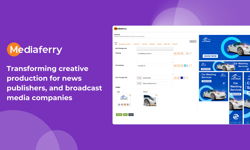
If you’re reading this, I’m going to assume you’re still gainfully employed in the publishing sector, in which case… hearty congratulations! You’ve almost made it through publishing’s annus horribilis.
As Jim Bilton reported in his Publishing Futures research – 2017 is proving to be a year of “great stress”, with turnover, profits and headcounts all under pressure. Some leading suppliers have gone under this year, including two of the big beasts – COMAG and Dovetail. This autumn saw Glamour magazine announce that it was reducing its print frequency from twelve to two, whilst the Wall Street Journal axed its international print editions altogether. Amongst a slew of regional newspaper closures, the demise in August of the Oldham Evening Chronicle was particularly shocking, although its subsequent acquisition by a local radio station left some hope. The June general election led to another bout of industry soul searching, as few in the press came anywhere close to anticipating the final result, whilst the Grenfell Tower tragedy prompted some to ask whether the local press had gone AWOL.
On the plus side, Jim Bilton’s research also showed that publishers are actually optimistic about their prospects in 2018. Cloud cuckoo land? Let’s hope not. Looking around me, I can indeed see some encouraging signs:
- a growing awareness that it’s not all about the numbers; the juxtaposition of anonymous eyeballs and rampant click-farm fraud, is shifting the focus onto verified eyeballs, engagement and context / environment, which play to publisher strengths
- paywalls are going up at an unprecedented rate, as publishers wake up to the fact that content really is their USP
- readers are starting to pay for quality digital content, upending the old saw that no one will pay for content online
- increasing talk (still more talk than action, but that might follow) of publisher collaboration both at the front end, with talk of pooling audience data so as to compete more effectively in the numbers game with the big social platforms, and at the back end in sharing processes
- anecdotally, more publishers are realising that outdated CMS systems are their Achilles heel and that investing in better platforms will enable them to unleash their editorial talent
- increased focus on market depth (where specialist publishers will always beat the social media generalists) as opposed to breadth
- growing adoption by publishers of AI and templating, both trends which allow them to increase output and channel their talented and expensive creative staff into higher value areas
On top of all that, the continuing focus on fake news remains a huge opportunity for us to demonstrate our trust credentials. So, … let’s try to be optimistic about 2018!
Finally, Happy Birthday to us! Fourteen years old this November. Much has changed since we launched. In the autumn of 2003, one story really stood out – the decision by the Independent and the Times to switch from broadsheet to tabloid. This was seen as a truly ground-breaking move and a possible turning point in newspapers’ fortunes. The Guardian reported on its website: “Research carried out by the Independent has shown commuters and women prefer the tabloid because it is less bulky and easier to read on public transport.” As I said, much has changed… As always, thank you to our advertisers, in the magazine, the newsletter and on our website. Please call them.










